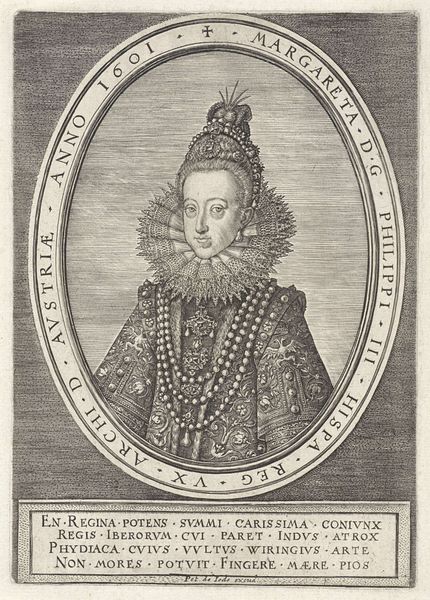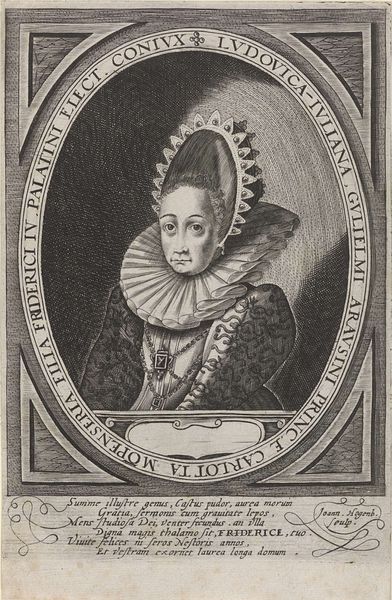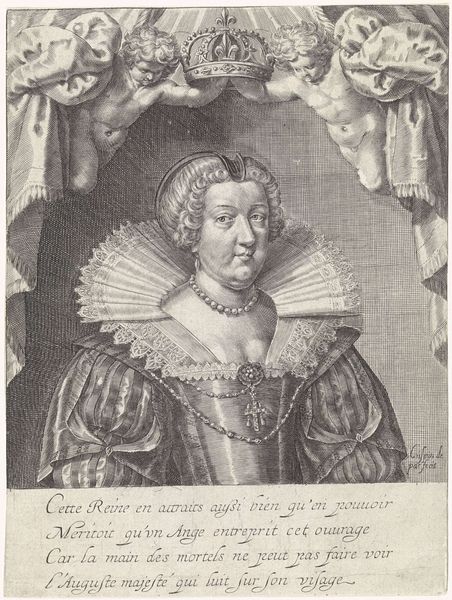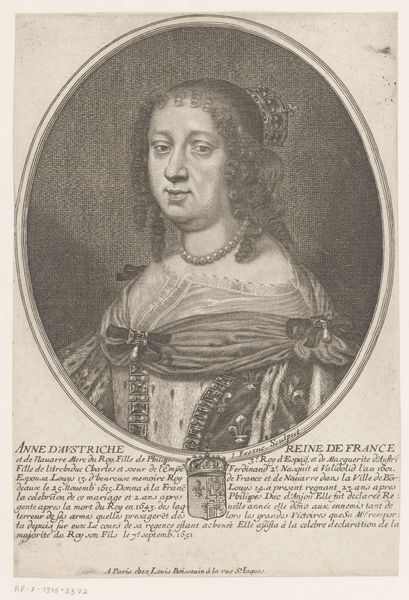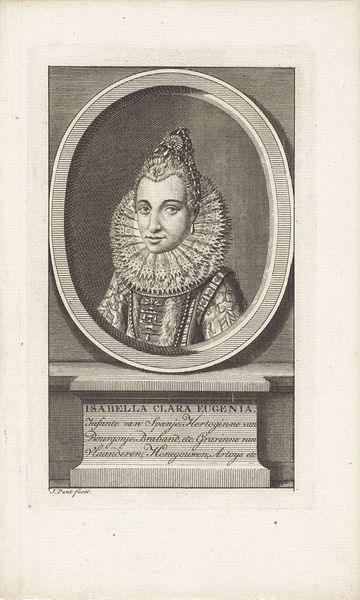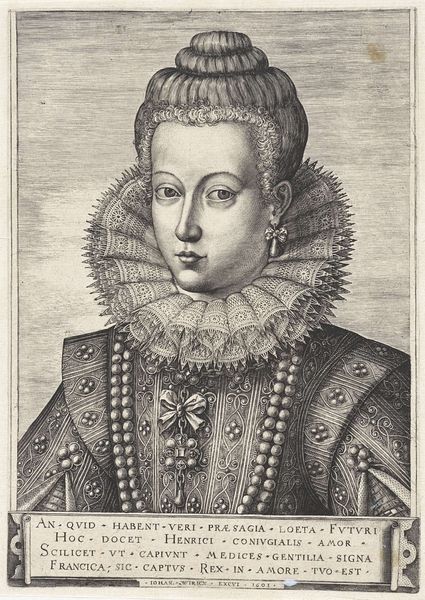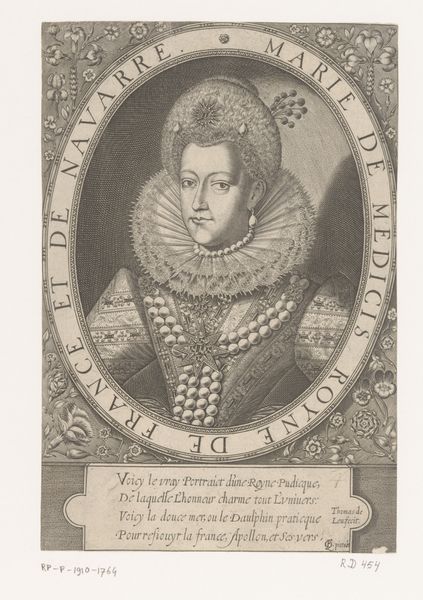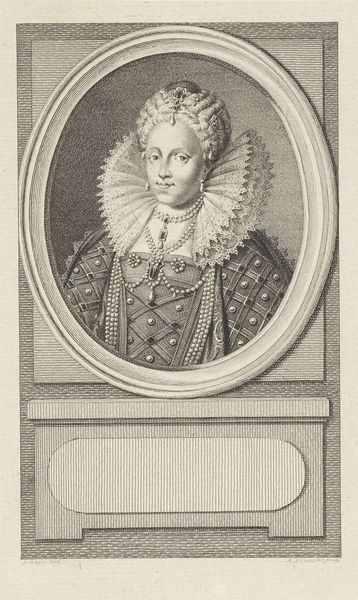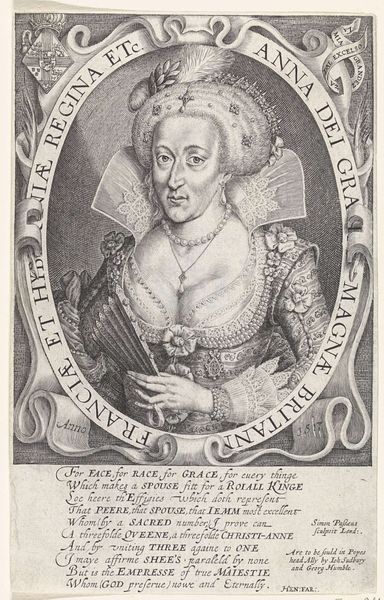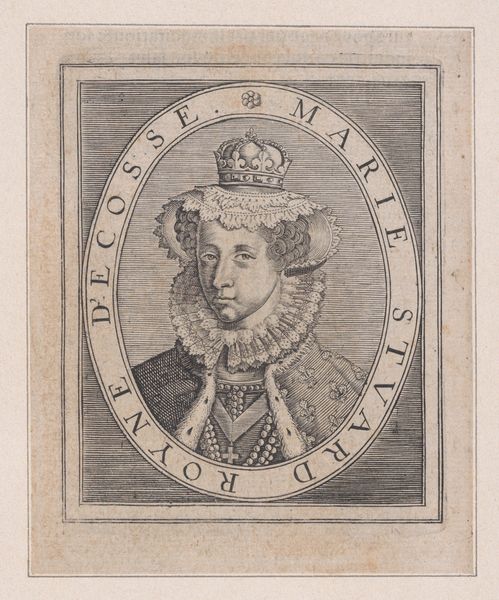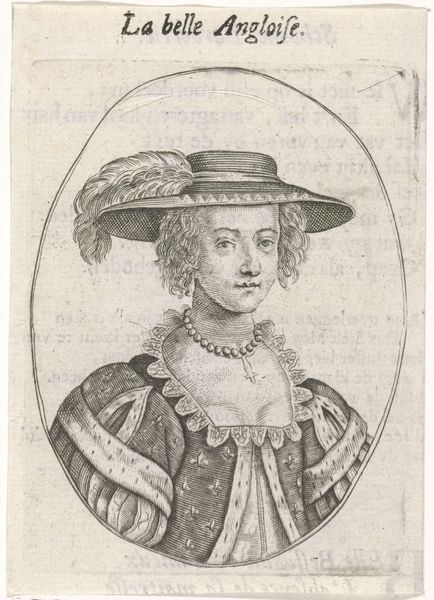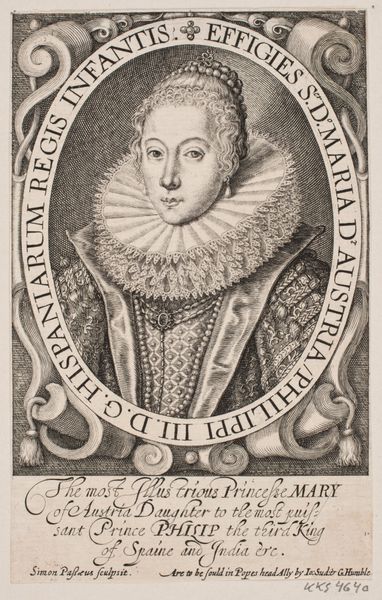
#
pencil drawn
#
aged paper
#
toned paper
#
pencil sketch
#
old engraving style
#
personal sketchbook
#
old-timey
#
19th century
#
pencil work
#
columned text
Dimensions: height 174 mm, width 104 mm
Copyright: Rijks Museum: Open Domain
Curator: Here we have a piece from 1763 by Jan Punt, titled "Portret van Lodewijk XIII, koning van Frankrijk," which translates to "Portrait of Louis XIII, King of France." It resides here at the Rijksmuseum. Editor: Immediately, the thing that jumps out at me is how formal and almost theatrical the presentation is, particularly the ruff. But the execution feels… subdued. It has the markings of an engraving or drawing of some kind, but in aged pencil or ink. There’s almost something hesitant about the lines. Curator: You're right to pick up on that feeling of constraint. Remember, portraits of rulers weren't just about capturing a likeness; they were powerful tools of statecraft, projecting authority and legitimacy. The somewhat stiff presentation reinforces the king's position in the social and political hierarchy. Editor: But isn't that interesting, right? Louis XIII’s reign was anything *but* stable. Think about the religious conflicts, the power struggles with the nobility... Seeing this image, knowing the context, there's this quiet push-pull of the image and what Louis really represented in French history. What's your view on how the social upheavals and class-based-conflict influenced its production or perception during its time? Curator: It’s plausible the artist's hand was consciously or unconsciously influenced by these undercurrents, the pencil perhaps becoming a tool for more subtle negotiations of power than the grand oil paintings of the court. And even if that seems a reach, that this work comes down to us shows the power of these visual representations to shape understandings of power relations in a long durée. Editor: Right, and maybe that subversion is too overt or too generous of an analysis for Punt. Maybe this just captures the *limits* of the portrait genre itself when faced with the complex realities of leadership. What does it really mean to render power and politics into ink on paper? What does this king really *mean*? Curator: It leaves you thinking about the relationship between public image and private life, between propaganda and truth. Editor: It does, indeed. Curator: Well, it makes you reconsider who he really was behind the robes and crown.
Comments
No comments
Be the first to comment and join the conversation on the ultimate creative platform.
